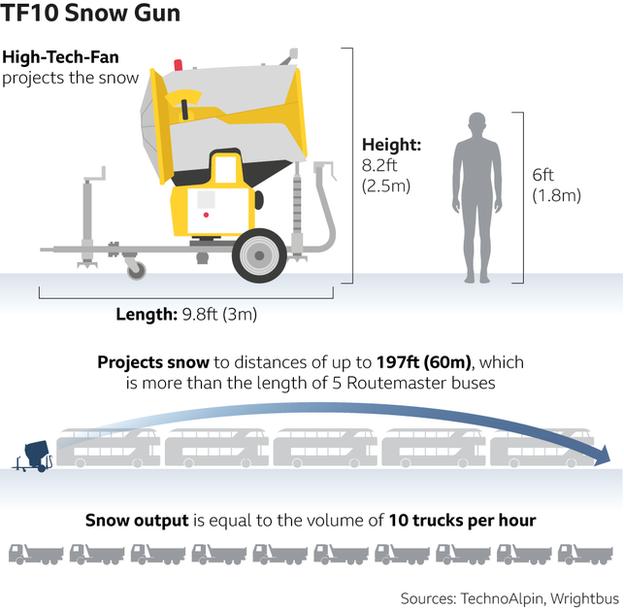ARTICLE AD BOX
Artificial snow used at Beijing 2022 "poses tough environmental questions" with more than 222 million litres of water needed to create snow conditions.
Beijing 2022 will be the first Winter Olympics to rely almost 100% on artificial snow.
A report by the Sport Ecology Group at Loughborough University and Save Our Winters outlines the environmental dangers of artificial snow.
Harder artificial snow is dangerous for athletes, the report also adds.
Why is artificial snow needed?
Weather changes caused by global warming are threatening the future of snow sports and reducing the number of suitable venues for future Winter Olympics, according to the 'Slippery Slopes' report.
Of the 20 Winter Olympic venues since 1924, scientists believe only 10 will have the 'climate suitability' and natural snowfall levels needed to host an event by 2050.
At Sochi 2014, the equivalent of more than 1,000 football pitches were covered in fake snow.
The International Olympic Committee warned in a bid evaluation document that the Yanqing and Zhangjiakou venues for the 2022 Games "have minimal annual snowfall and would rely completely on artificial snow".
Almaty, a city in Kazakhstan which boasts snowy winters, was the other contender, but Beijing was seen as a safe pair of hands, having hosted the 2008 Olympics.
Damage to the environment
The host committee for Beijing 2022 estimates it will need 222 million litres of water to create snow conditions, but Beijing is one of the world's most water-scarce cities.
China has pledged to deliver a "green and clean" Games, using 100% renewable energy.
The production of artificial snow can be energy and water-intensive, even if powered renewably, and often chemicals or biological additives are added to enhance quality and slow melt.
The chemically-treated water can decrease biodiversity and disrupt vegetation and a slow melt means plant growth is delayed underneath the snowpack.
Peter Speight, a British freestyle champion and Winter Olympian, thinks man-made snow should not be seen as a solution to combat climate change.
"It's helpful for creating physical snow for people to use," he said. "But it uses large amounts of water and energy and does not help solve climate change.
"We need to solve climate change at the source rather than rely on mitigation-focused solutions."
 Beijing 2022 is using around 300 snow guns to cover an area of approximately 800,000 square metres
Beijing 2022 is using around 300 snow guns to cover an area of approximately 800,000 square metresA danger to athletes
Athletes are at a greater risk when competing on artificial snow as it tends to create a faster and harder surface, which can cause more severe injuries when falls occur.
British freestyle skier Laura Donaldson, who competed at the 2002 Salt Lake City Winter Olympics, says athletes are at higher risk of injury when competing on man-made snow.
"If freestyle super pipes are formed from snow-making machines in a poor season, the walls of the pipe are solid, vertical ice and the pipe floor is solid ice," she told the report.
"This is dangerous for athletes."

 3 years ago
67
3 years ago
67








 English (US) ·
English (US) ·